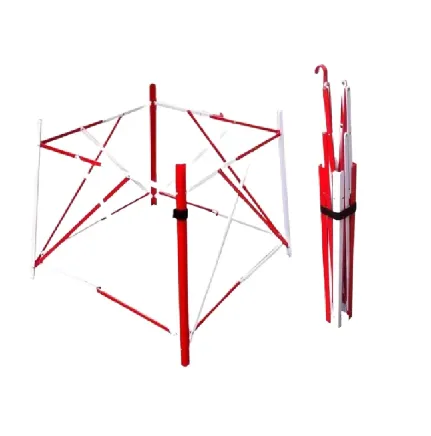
-
 africano
africano -
 albanese
albanese -
 Amarico
Amarico -
 Arabo
Arabo -
 armeno
armeno -
 Azero
Azero -
 Basco
Basco -
 bielorusso
bielorusso -
 bengalese
bengalese -
 Bosniaco
Bosniaco -
 bulgaro
bulgaro -
 catalano
catalano -
 Cebuano
Cebuano -
 Corso
Corso -
 croato
croato -
 ceco
ceco -
 danese
danese -
 Olandese
Olandese -
 Inglese
Inglese -
 esperanto
esperanto -
 Estone
Estone -
 finlandese
finlandese -
 francese
francese -
 Frisone
Frisone -
 galiziano
galiziano -
 georgiano
georgiano -
 Tedesco
Tedesco -
 greco
greco -
 Gujarati
Gujarati -
 Creolo haitiano
Creolo haitiano -
 haussa
haussa -
 hawaiano
hawaiano -
 ebraico
ebraico -
 No
No -
 Miao
Miao -
 ungherese
ungherese -
 islandese
islandese -
 igbo
igbo -
 indonesiano
indonesiano -
 irlandesi
irlandesi -
 Italiano
Italiano -
 giapponese
giapponese -
 giavanese
giavanese -
 Kannada
Kannada -
 kazako
kazako -
 Khmer
Khmer -
 Ruandese
Ruandese -
 coreano
coreano -
 curdo
curdo -
 Kirghizistan
Kirghizistan -
 TBC
TBC -
 latino
latino -
 lettone
lettone -
 lituano
lituano -
 Lussemburghese
Lussemburghese -
 macedone
macedone -
 malgascio
malgascio -
 malese
malese -
 Malayalam
Malayalam -
 maltese
maltese -
 Maori
Maori -
 Marathi
Marathi -
 mongolo
mongolo -
 Birmania
Birmania -
 nepalese
nepalese -
 norvegese
norvegese -
 norvegese
norvegese -
 occitano
occitano -
 Pashtu
Pashtu -
 persiano
persiano -
 Polacco
Polacco -
 portoghese
portoghese -
 Punjabi
Punjabi -
 rumeno
rumeno -
 russo
russo -
 Samoano
Samoano -
 Gaelico Scozzese
Gaelico Scozzese -
 serbo
serbo -
 Inglese
Inglese -
 Shona
Shona -
 Sindhi
Sindhi -
 Singalese
Singalese -
 slovacco
slovacco -
 sloveno
sloveno -
 Somalo
Somalo -
 spagnolo
spagnolo -
 Sundanese
Sundanese -
 Swahili
Swahili -
 svedese
svedese -
 Tagalog
Tagalog -
 Tagico
Tagico -
 Tamil
Tamil -
 Tartaro
Tartaro -
 Telugu
Telugu -
 tailandese
tailandese -
 Turco
Turco -
 turkmeno
turkmeno -
 ucraino
ucraino -
 Urdu
Urdu -
 Uiguro
Uiguro -
 Uzbeco
Uzbeco -
 vietnamita
vietnamita -
 gallese
gallese -
 Aiuto
Aiuto -
 yiddish
yiddish -
 Yoruba
Yoruba -
 Zulù
Zulù


Mag . 28, 2025 11:17 Torna alla lista
Mastering Cable Installation: Tools That Make the Difference
Know Your Cable Roller Types and Support Systems
Efficient cable installation relies on both the right tools and the right techniques. One of the most important choices installers face is selecting the appropriate cable roller types. These rollers reduce friction and prevent damage as cables are pulled across various surfaces. Common types include straight rollers, corner rollers, and triple corner rollers, each designed for specific angles and pathways to maintain cable integrity.

Another critical component, especially in vertical or suspended installations, is the bus drop cable support. This support system safely manages the weight of hanging cables, reducing strain and ensuring compliance with electrical standards. Whether you're installing power lines or communication cables, using the correct support and roller type is essential for a smooth and secure operation.
Choosing the Right Cable Pulling Accessories
When it comes to pulling cables, choosing the right Cable socks—also known as cable grips or cable mesh grip—is crucial for both safety and efficiency. These tools grip the cable securely without causing damage, allowing for smooth, controlled pulls. They are commonly made from high-tensile wire mesh and are available in different designs for single-eye, double-eye, and lace-up applications.
Equally important is selecting the correct cable pulling socks size. A properly sized grip ensures the cable remains secure throughout the pulling process. Too loose, and the cable may slip; too tight, and it could be damaged. Always measure the cable diameter and refer to manufacturer sizing charts to match it with the right cable pulling socks size.
In conclusion, mastering cable installation means paying attention to both major equipment and the finer details. From selecting the best cable roller types for your layout to using the correct Cable socks and cable mesh grip, each decision plays a role in the success of your project. Don’t forget to ensure proper bus drop cable support for overhead installations and always confirm the right cable pulling socks size for a safe and efficient pull. The right tools not only speed up the job but also protect your cables and improve long-term reliability.
Ultime notizie
Hydraulic Crimping Tool – Precision & Heavy-Duty Speed
NotiziaNov.05,2025
Cable Pulling Swivel | High-Strength, Anti-Twist, Stainless
NotiziaNov.04,2025
Cable Pulling Tools – Pro-Grade, Safe, Fast Install
NotiziaNov.03,2025
Hydraulic Crimping Tool – Fast, Precise, Quick-Change Dies
NotiziaNov.02,2025
Hydraulic Crimping Tool for Sale | Fast, Precise, Heavy-Duty
NotiziaNov.01,2025
Duct Rodder for Sale – Non-Conductive, Durable Fiberglass
NotiziaOct.31,2025








